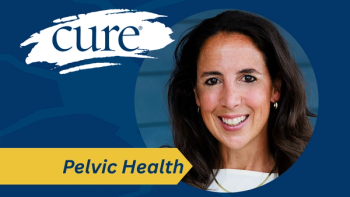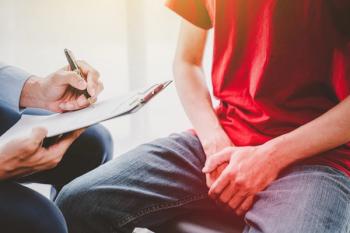
- Summer 2007
- Volume 1
- Issue 1
Beauty After the Beast
Helping yourself re-emerge once cancer treatment is over.
While undergoing treatment for breast cancer, Darla Humrich once made a game of counting the people who turned to look when she and her daughter went to the store.
"Fifteen people in 30 minutes,” says Humrich, a Denver resident and now a four-year survivor. But it wasn’t just the stares of strangers that bothered her. “When your appearance changes, you see yourself differently. I didn’t feel like myself.” Humrich used makeup tips learned in a Look Good ... Feel Better (LGFB) session to help her look and feel normal again—tips that she still uses.
While these free sessions are available only to those in treatment, attendees [who participate in a hands-on workshop] take home a booklet covering 12 steps of skin care, makeup, and information on wigs, scarves, and other head coverings, according to Lisa Burris, director of the Cosmetic, Toiletry, and Fragrance Association Foundation, a program sponsor with the American Cancer Society and National Cosmetology Association. This year, some 50,000 women will attend a session, and like Humrich, many will use what they learn there well beyond treatment days. The information is also available on the LGFB website at
Makeup professional Lori Ovitz knows the connection between how people see themselves and their overall health. In fact, she wrote a makeup guide just for cancer patients and survivors. “It’s about looking like yourself, seeing yourself when you look in the mirror. Makeup is a very accessible, inexpensive way to take control of your appearance,” she says.
Each cancer can present its own appearance challenges, some of which resolve almost as soon as treatment ends. But others can last much longer.
Recognition of how cancer treatments can affect appearance, sometimes for years or even a lifetime, is growing. In November, the Illinois General Assembly declared the first Tuesday in December “Cancer Survivor Salon and Spa Support Day,” urging spas and salons to offer cancer survivors free services that day.
“I thought it was important because there are so many cancer survivors,” says Illinois state Rep. Karen May, the action’s primary sponsor. “This celebrates that they have survived, and gives them a chance to be pampered.”
Hospital volunteer Barbara Paget spearheaded the Illinois initiative after seeing a news segment about a California spa offering free services to cancer survivors. She hopes to take the idea nationwide, capitalizing on growing recognition of how personal appearance can affect a person’s sense of well-being.
Changes in skin can be one of the biggest appearance issues for survivors. Ellen Johnson, a Houston writer whose metastatic breast cancer was diagnosed two years ago, says, “Chemo really dries your skin out; it wreaks havoc. You do different things, like use cream cleanser instead of soap.” An online forum where women discuss cancer issues introduced Johnson to Lindi Skin products, created specifically to address changes in skin during treatment. The products made a huge difference, says Johnson, and many people continue to use them well beyond treatment.
Ovitz recommends Lindi Skin, too, and in general tells women to avoid perfumed products, which can irritate the skin.
Paige Atkinson, a 53-year-old pediatric nurse practitioner in Houston with metastatic breast cancer diagnosed 18 months ago, found relief for her dry skin with an over-the-counter product her doctor recommended, fragrance- and preservative-free Aquaphor Healing Ointment. (On an Internet listserv she frequents, women have also recommended Mane ’n Tail and Bag Balm ointment.) Atkinson also appreciated the LGFB products, and still uses the program’s tips on applying makeup.
“When you don’t feel good, putting on makeup makes you feel better,” she says. “Making that effort is important.”
Barbara Nelson, a retired preschool teacher, runner, and cyclist who learned she had metastatic breast cancer 13 years ago, says that after starting treatment, she discovered by looking at labels that all lotions are about the same. “I still use Aveeno,” she says, “because it has less petroleum, just to keep from itching. And I avoid sunburn.”
Sun protection is crucial. “Women get blotchiness or dark spots and think they’ll look better with a little color from the sun,” says Sheila Cann-Poling, a trainer for LGFB in Florida. “These problems can persist for weeks or months, depending on the individual. What they don’t realize, though, is that the sun sets that discoloration.” She advises survivors, especially those recently out of treatment, to use a heavy-duty SPF or sunblock. “Skin will usually go back to normal once chemo is out of your system.”
Radiation treatments can result in discoloration that may last for months, or even indefinitely, according to Cann-Poling. “The best you can do is use a cosmetic concealer to camouflage it,” she says. “If you’ve finished treatment and your doctor says it’s OK, you can put lotion on it.” Heavy-duty concealer or camouflage makeup may work best.
One survivor issue that doctors and nurses don’t often provide much information about is lymphedema, says Humrich. This chronic condition is the abnormal accumulation of interstitial fluid, due to dysfunction of the lymph system caused by surgery, radiation or chemotherapy. The result is swelling, as well as roughness, dryness and toughening of the skin. This can be a particular challenge, because any break in the skin can quickly lead to infection.
“Therapists can teach you massage to move the fluid around,” Humrich says. “Cream and lotion help your skin, and wearing a compression sleeve [can help with swelling]. Watch your level of physical activity, too. I wish there was more information out there; you have to ask.”
Atkinson has lost her hair twice, and splurged on a convertible the second time it grew back long enough to blow in the wind. “The first time, it grew back a gorgeous silver; everyone commented about it. This time, it’s growing back coarse. I just wash it—and let it blow.”
Many people don’t realize that having “normal” hair takes a while, “usually a good six to 10 months after the last treatment,” says Cann-Poling. “We also say to avoid coloring your hair for a while, even after treatment, because your body may still be affected by your treatment.”
Infrequently, patients can lose their hair permanently, a condition known as alopecia. As for lost eyebrows and eyelashes, it can take months after treatment for them to return to normal.
Using makeup to create natural looking brows and lashes is covered in the LGFB tips, and Ovitz also teaches these techniques.
“Brows and lashes frame your face and your whole appearance, so it’s good to get that back through makeup,” says Johnson. “It gives you some self-confidence.”
Chemotherapy left stripes on Atkinson’s fingernails for several months and caused nail fungus that has proved tenacious. She treats it by soaking the nails in white vinegar.
“There are so many changes in your nails,” says Johnson. “They may split, discolor, or separate from your skin.” Moisturizers and buffers help reduce ridges and peeling as nails grow out, says Ovitz.
Humrich, now an LGFB coordinator in Denver, advises being careful about using acrylic nails or trimming cuticles, both of which can cause infection while a person’s immune system is compromised during and after treatment. Ovitz recommends soaking cuticles and pushing them back. Sanitation is paramount, at home or a salon.
Women find what works by networking with others survivors and patients and visiting online forums. “One of the best products I found for my face, Avon’s Moisture 24 Long-Lasting Hydrating Cream, came from the kit that Look Good...Feel Better gives you,” says Johnson.
If your doctor or nurse has suggested a product, says Cann-Poling, try it. Otherwise, look for gentle products right for your skin’s current condition. Most of all, she says, take your time with any decision about appearance, and make up your own mind.
The application is more important than the actual cosmetic, says Ovitz. “You can look good with inexpensive makeup and not good with expensive makeup. Pick the things that work for you. Most of all, remember that taking care of yourself as a whole person—teeth, skin, nails—is a huge part of your recovery.”
Then let people stare, because you’ll look—and feel—great.
Survivors who want to encourage local spas and salons to participate in Cancer Survivor Salon and Spa Support Day, or to approach legislators regarding an official day in their state, can contact Barbara Paget at
Articles in this issue
over 18 years ago
Where Art & Science Intersectover 18 years ago
The Vitamin D Differenceover 18 years ago
Making the Most of Medicareover 18 years ago
Beyond "Cured"over 18 years ago
Snippetsover 18 years ago
Life Choicesover 18 years ago
The Survivor Has Arrivedover 18 years ago
Who’s Got You Covered?over 18 years ago
From Secrecy to Advocacyover 18 years ago
Defining Survivorship



